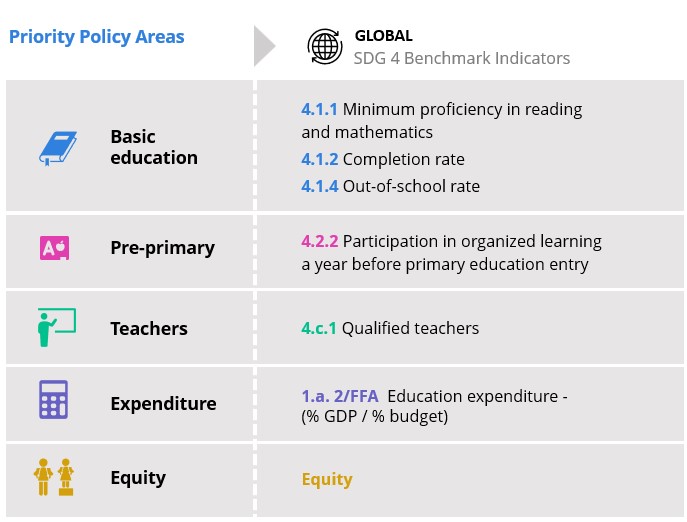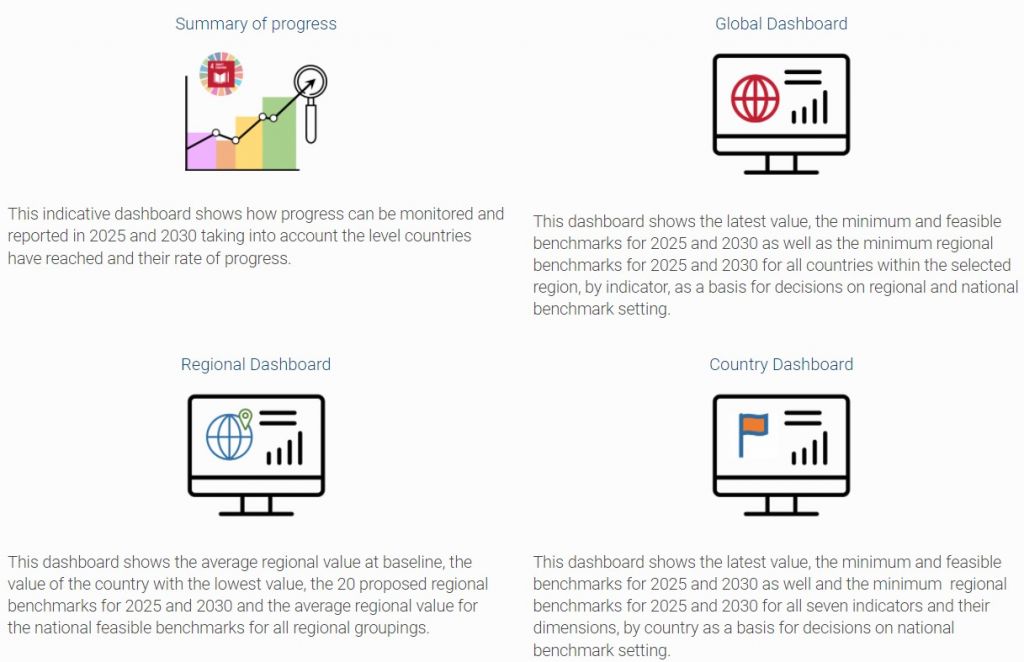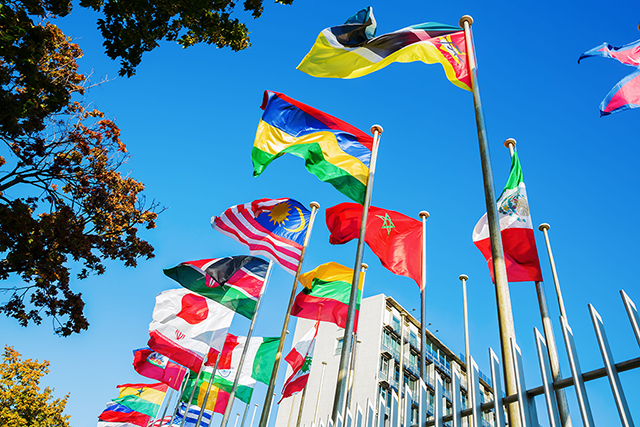SDG 4 Benchmarks
Since the adoption of the 2030 Agenda for Sustainable Development, the Education 2030 Framework for Action called on countries to establish “appropriate intermediate benchmarks (e.g. for 2020 and 2025)” for the SDG indicators, seeing them as “indispensable for addressing the accountability deficit associated with longer-term targets” (§28). However, a majority of countries has not yet translated the global targets into specific ones to serve as references to report their progress in a regular manner.
To fill this gap and make countries accountable vis-a-vis the agreed global targets of the 2030 Agenda in education, seven global indicators were endorsed to benchmark the global framework against regional ones at the 6th meeting of the Technical Cooperation Group on SDG 4 (TCG) in 2019 in Yerevan, Armenia.
Seven SDG 4 global indicators have been selected in the regional benchmarking process to take into consideration disparities of regions, sub-regions and countries.

An overview over the procedures, background, technical process, and other information can be found on the dedicated webpage of the UIS Technical Cooperation Group:
Furthermore, dashboards have been made available where data on the SDG 4 benchmark indicators can accessed. The different dashboards comprise global, regional and country overviews as well as a summary. The dashboards present for each of the seven indicators for each country and for several regional groups, the following information:
- the last value (most recent data point available);
- the minimum benchmark for 2025 and 2030 based on past rates of progress; and
- the feasible benchmark for 2025 and 2030 based on the rates of progress of high performing countries
- the National benchmark (to be determined) that needs to be set by each country on a voluntary basis; and
- the Minimum regional benchmark, or the recommended benchmark for the region, that is calculated as the average of the country feasible benchmarks weighted by the school-age population. For indicators on expenditure, it is 4% of gross domestic product (GDP) to education; and 15% of public expenditure to education.

To access the dashboards:
Benchmarks Dashboard – Technical Cooperation Group on the Indicators for SDG 4 (unesco.org)
Further information on the benchmark indicators, including a target-by-target analysis for Asia-Pacific, has been published in the Bridging Asia-Pacific Education Monitoring Frameworks and SDG 4.





